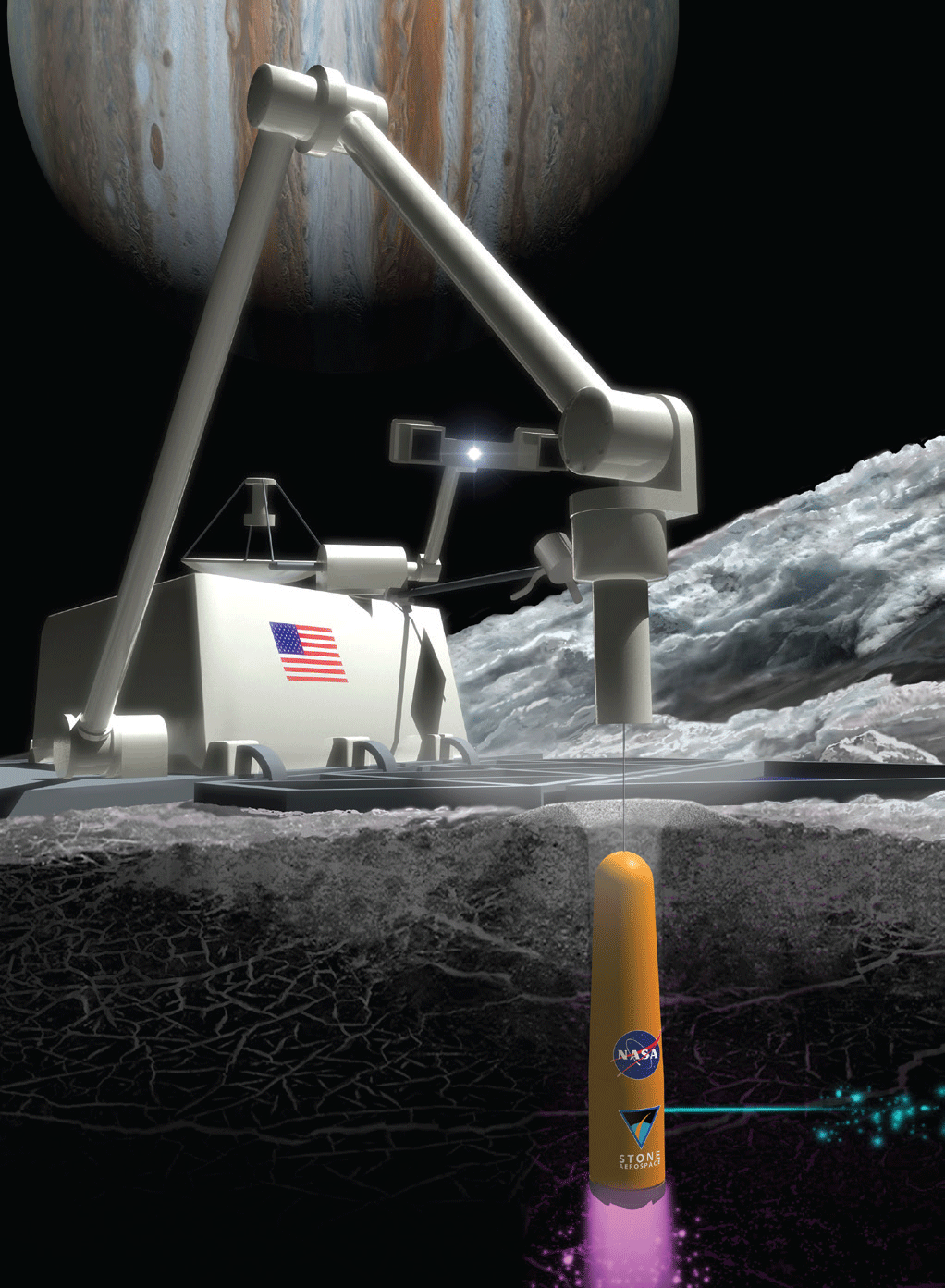By Matt Williams
Ever since the Pioneer and Voyager probes passed through the Jovian system in the 1970s, NASA and other space agencies have dreamed of one-day sending a mission to Europa. Beyond Earth, it is considered one of the most promising candidates for finding life, which could exist in the subsurface ocean that lies beneath the moon’s icy crust.
One of these concepts is known as the Cool High Impact Method for Exploring Down into Europan Subsurface (ARCHIMEDES), a proposed direct-laser penetrator that will use a laser light carried by an optical fiber tether to penetrate Europa’s icy crust. This mission could provide future missions with access to the ocean that exists beneath Europa’s surface and enable the search for life there.
The ARCHIMEDES concept is part of a two-year program being run by NASA’s Science Mission Directorate (SMD) to foster the development of ice-penetration technologies. In this case, sponsorship is being provided through the SMD Planetary Science Division’s Concepts for Ocean Worlds Life Detection Technology (COLDTech) program.
This program supports the development of spacecraft-based instruments and technology that will enable exploration and sample acquisition on ocean worlds like Europa, Enceladus, and Titan. With ARCHIMEDES, the goal is to create a prototype direct-laser penetrator that will be able to cut through the surface ice efficiently so that evidence of life can be more easily detected.
Conceptual design of ARCHIMEDES operating on Europa. - Image Credit: NASA/SMD
To create this penetrator, NASA has contracted with Stone Aerospace, a Texas-based company that specializes in human exploration technologies. Founded by Dr. Bill Stone (a famed engineer and cave explorer) and Dr. Peter Doran (a Louisiana State University geologist), the company is focused on technologies that facilitate the exploration of underground and underwater environments.
The concept was first introduced as part of NASA’s 2017 Science Mission Directorate Technology Highlights Report. The mission’s approach involves using laser light directed from a nose cone to efficiently penetrate hundreds of meters of ice. This method of ice-mining, as indicated in the report, offers numerous advantages:
“This unique approach to ice penetration is advantageous in that it can readily be integrated with a dedicated sensor fiber, which can also accommodate instruments capable of searching for biomarkers and characterizing the radiation/light environment.”
Artist’s impression of a water vapor plume on Europa. - Image Credit: NASA/ESA/K. Retherford/SWRI
The technology development project commenced on March 1st, 2017, and has made significant progress since then. Under the supervision of the project’s Principle Investigator (PI), several direct laser penetrator design studies and laboratory experiments have been conducted. The PI has also initiated trade studies and design activities for the integrated fiber instruments.
After the prototype is complete, its performance will be assessed in harsh environmental conditions similar to those that exist on Europa’s surface. If all goes well, the ice-penetrating technology used by ARCHIMEDES may enable future missions to Europa that will be able to efficiently access and analyze the liquid water environment beneath its icy crust. This, in turn, could facilitate the search for life in Europa’s interior ocean.
In the coming years, multiple missions have been proposed to explore Europa, including NASA’s Europa Clipper mission and the ESA’s JUpiter ICy moons Explorer (JUICE). It is hoped that these missions will not only answer the decades-old question of whether or not Europa and others “ocean worlds” like it support life, but whether or not there is life beyond Earth.
At long last, and with any luck, we may finally know that we are not alone in the Universe.
Source: Universe Today - Further Reading: NASA, SMD Tech Highlights Report
If you enjoy our selection of content please consider following Universal-Sci on social media:

















